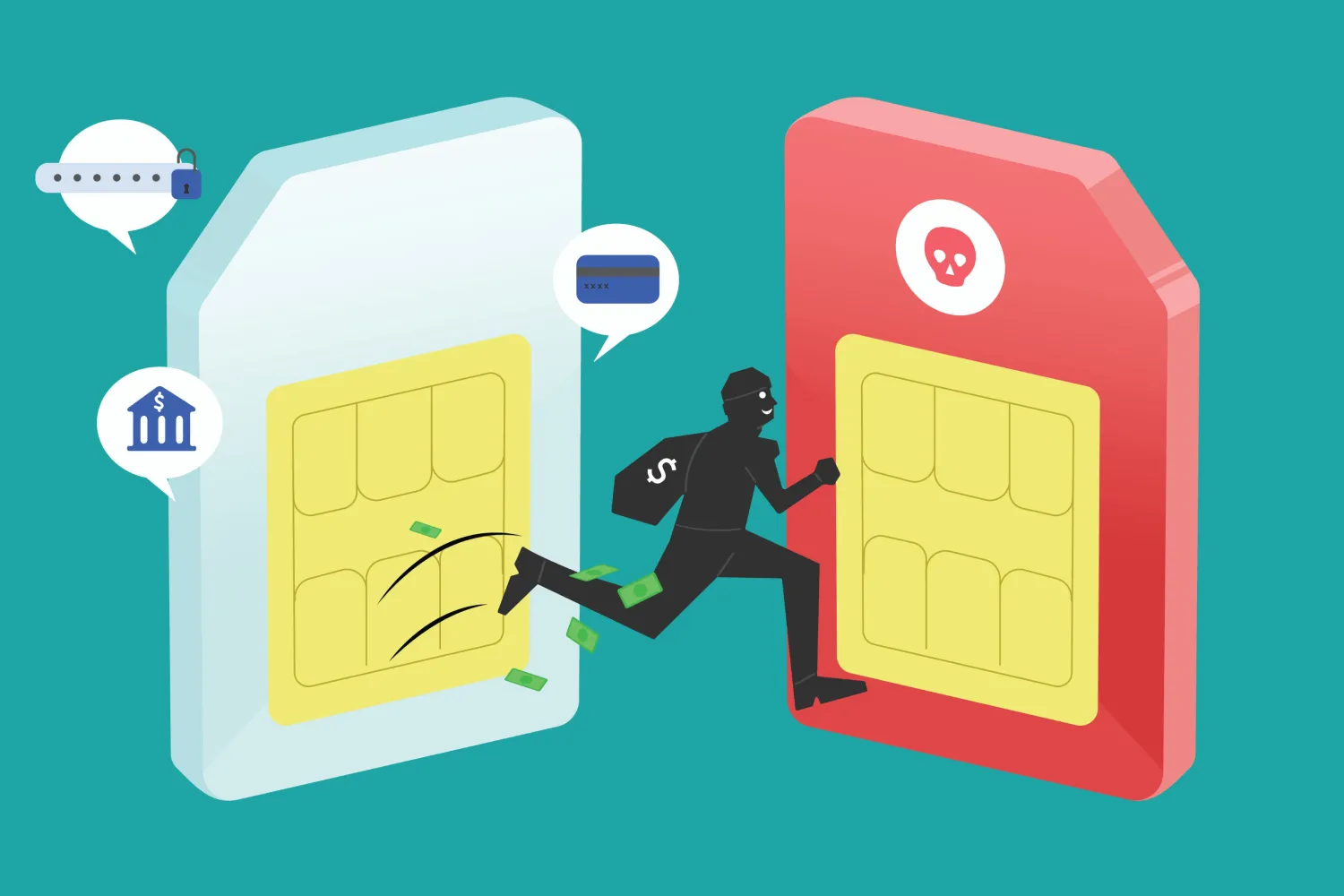Key Takeaways:
- SIM swapping occurs when a fraudster redirects your phone number to a SIM card of their choosing.
- To prevent SIM swaps, enable protections through your service provider.
- Other protective strategies include reducing the amount of personal information you leave online and using non-SMS two-factor authentication.
Your SIM card is what connects your phone to a cellular network. When you change physical devices, you will need to redirect your phone number through a new SIM card. Unfortunately, hackers have figured out how to exploit this process and can try to redirect your number to a SIM card they have.
To avoid SIM swapping, you’ll need to understand what it is and the security strategies you can use to protect yourself.
What Is a SIM Card?
A SIM (Subscriber Identity Module) card is a small, removable chip inside your device. It identifies your phone and connects it to a cellular network so you can make calls, send texts, store contacts, and use cellular data. SIM card technology is what allows you to keep your same number even when you get a new phone.
eSIM Cards
Embedded SIM cards (eSIMs) are virtual SIMs that are part of your device’s hardware. They aren’t physical cards that have to be removed when you switch SIMs. eSIMs offer some additional security benefits that regular SIMs don’t have, but they can still be part of a fraudulent SIM swap.
What Is SIM Swapping?
SIM swapping occurs when someone switches your number to a different SIM card. Fraudsters can call your mobile phone provider, pretend to be you, and ask to swap your SIM card. They might also bribe the phone provider employee, hack into the system themselves to execute the swap, or physically switch the SIM cards (eSIMs protect against a physical swap).
Once the swap is complete, calls, texts, and two-factor authentication codes that you would normally receive go to the hacker’s phone. Not only is this a huge invasion of privacy, but it can also lead to further fraud. With access to authentication codes, hackers can reset your passwords and hack into email, social media, or bank accounts.
How To Protect Yourself From SIM Swapping
The first thing you’ll want to do is enable SIM swapping protections through your phone provider. If you have AT&T, Verizon, or T-Mobile, they all offer these protections at no additional charge. By setting this feature up, anyone who wants to switch your SIM will need to provide a pre-set passcode or enter a PIN.
Other strategies include:
- Using non-SMS two-factor authentication when possible (face ID, fingerprinting, or via an app).
- Not replying to spam messages to avoid phishing attacks that try to get your personal information.
- Using a second phone number app like Burner to reduce the number of times your real number appears online.
FAQs
Does eSIM Prevent SIM Swapping?
An eSIM protects against physical SIM swaps and does have some security features, but a hacker can still swap an eSIM.
How Do You Know if a SIM Swap Happens?
The most obvious sign will be if your phone won’t connect to your cellular network and you can’t use any cellular data.
What Do You Do if Your SIM Card is Swapped?
Call your phone provider to disable your number and see if it can be recovered. Then lock your SIM card, turn off SMS two-factor authentication, and check other accounts for fraud attempts.
Avoid SIM Swapping
Make sure you enable SIM swapping protections through your phone carrier. Once those PINs and passcodes are set, follow basic cybersecurity habits to reduce the risk. Keep your phone close, your info tight, and your SIM right where it belongs.
Sources:
What Is A Sim Card? | T-Mobile
What Is an eSIM Card? eSIM vs Physical Sim, How To's & More | T-Mobile
How to Protect Yourself From SIM Swapping and Porting Scams
SIM Swapping Scams: How To Protect Your Phone and Personal Data




.svg)
.svg)

.svg)
